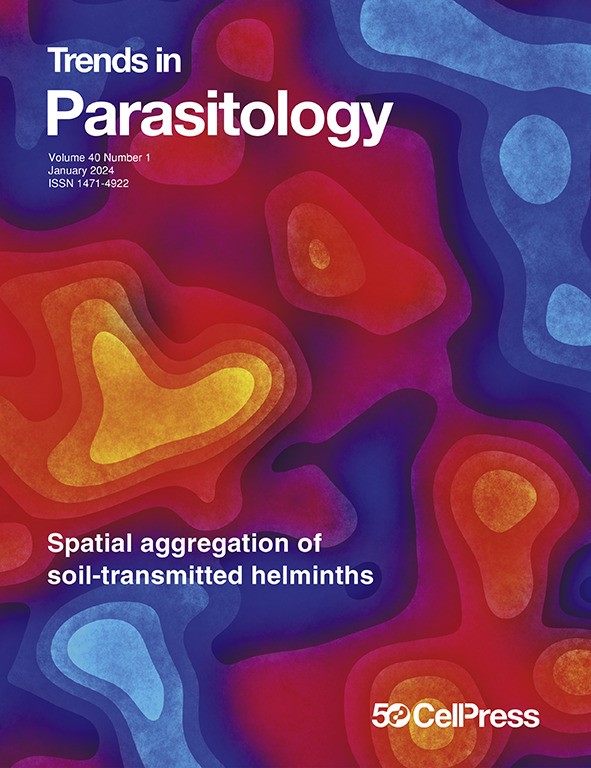防止外来蚊子入侵。
IF 6.6
1区 医学
Q1 PARASITOLOGY
引用次数: 0
摘要
增强的昆虫不育技术,包括释放经吡丙醚等杀菌剂处理过的不育雄蚊,以污染繁殖地点,已被证明对伊蚊载体有效。这种方法可以防止建立共享相同幼虫栖息地的入侵蚊子,例如斯氏按蚊。本文章由计算机程序翻译,如有差异,请以英文原文为准。
Preventing the establishment of invasive exotic mosquitoes.
The boosted sterile insect technique, which involves releasing sterile males treated with a biocide such as pyriproxyfen to contaminate breeding sites, has been shown to be effective against Aedes vectors. This approach could prevent the establishment of invasive mosquitoes sharing the same larval habitats, such as Anopheles stephensi.
求助全文
通过发布文献求助,成功后即可免费获取论文全文。
去求助
来源期刊

Trends in parasitology
医学-寄生虫学
CiteScore
14.00
自引率
3.10%
发文量
148
审稿时长
6-12 weeks
期刊介绍:
Since its inception as Parasitology Today in 1985, Trends in Parasitology has evolved into a highly esteemed review journal of global significance, reflecting the importance of medical and veterinary parasites worldwide. The journal serves as a hub for communication among researchers across all disciplines of parasitology, encompassing endoparasites, ectoparasites, transmission vectors, and susceptible hosts.
Each monthly issue of Trends in Parasitology offers authoritative, cutting-edge, and yet accessible review articles, providing a balanced and comprehensive overview, along with opinion pieces offering personal and novel perspectives. Additionally, the journal publishes a variety of short articles designed to inform and stimulate thoughts in a lively and widely-accessible manner. These include Science & Society (discussing the interface between parasitology and the general public), Spotlight (highlighting recently published research articles), Forum (presenting single-point hypotheses), Parasite/Vector of the Month (featuring a modular display of the selected species), Letter (providing responses to recent articles in Trends in Parasitology), and Trendstalk (conducting interviews). Please note that the journal exclusively publishes literature reviews based on published data, with systematic reviews, meta-analysis, and unpublished primary research falling outside our scope.
 求助内容:
求助内容: 应助结果提醒方式:
应助结果提醒方式:


